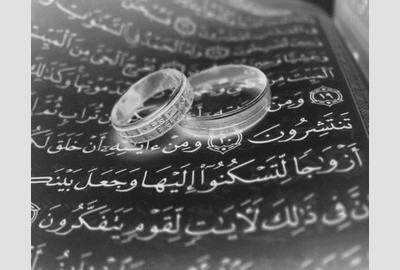Perfume and its copyright protection
-By Faria Binta Alam (Advocate)
The name of a perfume is usually trademarked, the packaging may be protected trade dress, the text on the box may be copyrighted, and certain synthetic olfactory elements or even the bottle could be patented. The liquid or the fragrance itself has never enjoyed any such protection and neither has the fragrance itself.
The exceedingly rewarding fragrance business, as such, faces invariable encroachment from smell-alike. A smell-alike is a copy of a perfume that is similar to the original but sold at a lower price. This imposition is making the perfume industry fight hard to protect its market from the copycats.
A perfume's fragrance is very slanted and delicate. It is made up of three sub-elements called notes. The top note is the first whiff or impression that the user gets from the perfume; the middle note is the fragrance that emerges when the top note is wearing off before the bottom note is yet to emerge; and the bottom note is the base scent pervading the whole perfume.
Why it’s necessary to be protected:
A fragrance's subjective and subtle nature, coupled with the relative ease of reverse engineering, makes it easy for originals to be copied without large investments in research. The original creator could spend millions on R & D, branding, and marketing to build up goodwill and a reputation only to have it encroached upon by a smell-alike.
The modus operandi is fairly simple, whereas the trick lies in getting the combinations right. It becomes rather simple to reproduce, if the correct combination is achieved flawlessly. Unfortunately, chemical analysis can easily reveal the composition of a perfume making and hence it is easy to copy. Smell-alikes often do not need to even copy all the ingredients of the original perfume to achieve very similar results.
On top of that the copycats also often use comparable kind of bottle shapes, colors, and packaging to make the copy resemble to the original one. Creators of lavish and finest perfumes are predominantly firm hit by these copycats.
Protection that can be offered:
The things that make a fragrance unique also make them intangible and unpredictable and virtually impossible to trademark. Therefore the only protection that can be offered to it is the Copyright protection.
The term Copyright indicates an area of Intellectual Property Law that regulates the creation and use that is made of a range of cultural goods[1]. The best part of it is that no registration certificate is needed to prove the ownership of that property[2]. However, to receive such protection the creation needs to be within any of the eight categories. But none of these categories, apart from ‘Artistic work’, seems to include the perfume as a work.
‘Artistic work’, the fourth category, contains a detailed list of the types of subject matters that are protected as ‘Artistic work’[3]. This can be divided into three categories one of them is ‘artistic craftsmanship’, which appears to best fit in this situation, though generally it contains things like handcrafted jewellery, tiles, pots and so on.
For Smell to be protected under this law, certain criteria’s should be fulfilled and they are, whether it is a product that is accessible to human perception, whether it has its own original character and carries the personal imprint of its creator[4]. The first requirement for this is justified as the specific character of smell made the human olfactory organs to sense the difference between different scents[5]. For the issue of ‘originality’ it has to be shown that there remains a clear link between the creator and the work, which means the copyright law will then focus on the contribution of the creator towards the resulting work[6]. Surprisingly the test of originality is not concerned with issues like whether the work is inventive, novel, or unique and this is visible from the decisions like University of London Press v. University Tutorial Press[7] and Sawkins v. Hyperion[8], where it had been held that ‘originality does not require ‘novelty, usefulness, inventiveness, aesthetic merit, quality, or value. A work may be complete rubbish and utterly worthless, but copyright protection may be available for it…….’ Thus the word original means the creator must have exercised the requisite intellectual qualities such as labour, skill, effort (according to the British version) or, ‘intellectual creation’ (according to the European version) in producing the work[9].
Landmark cases:
Some progress has been made, as evidenced by the Dutch case Lancome v. Kecofa[10]. When Kecofa copied 24 of Lancome's 26 ingredients to make their perfume, it was judged as copyright infringement. Though the fragrance was still deemed to be too subtle to be protected under copyright law, it was the liquid medium carrying the fragrance that was awarded protection under Dutch law. In a more recent case of L’Oreal SA v. Bellure NV[11], a key issue attended to was the concept of “smell – alikes”. L’Oreal and its three brands- L’Oreal, Garnier and Lancôme, brought an infringement suit against a Belgian company for making imitation perfumes. These perfumes were sold at a very low price and thus were affected to the L’Oreal’s clientele.
Accessible Substitutes:
Well now questions may arise why it should be protected under copyright law and why not under trade mark or Patent. Similar was the situation by the Court as faced in Kecofa[12]. The fact that smells hardly fit in the copyright system, and that the legislature clearly did not think of odors when it drew up copyright law, was not sufficient for the High Court to refuse to confer protection. The Court simply then focused on the open-ended requirements for protection: like any other perceptible expression, if a smell is original it could in principle be copyrightable. The originality requirement means that a perfume that exactly replicates, say, the smell of roses, cannot be protected – just as an accurate 3D scale model of the Matterhorn mountain would be denied protection. Similarly, a scent that resembles some classic perfume may not fulfil the requirement. But if a parfumeur gives his own twist to a smell, it may qualify for protection.
In terms of Trademark, it is felt that if the ordinary consumer’s can make a possible connection or association between the registered and infringer sign then the claimant might be entitled to Trade Mark Protection because in such circumstances it might affect their reputation and business.
However, protection under Patent Act can only be accessible if the inventor able to prove four aspects and that are novelty, inventiveness, capability of industrial application and must not fall within the categories specifically excluded[13]. But these requirements seem not to be justifiable for fragrance. Because it is probably possible to protect the composition of the perfume under this law but the novelty of smell seems impossible as it couldn’t be graphically represented.
Thus Copyright seems to remain the only option for such protection.
Possible Impact:
The risk of unwarranted monopolies might thus seem the only tormenting aspect of the protection of perfumes. Most humans do not have a highly developed sense of smell and can only distinguish a limited palette of scents. Thus, different perfumes may readily be held to be alike, and infringements quickly found. As such, the protection of perfumes could undermine competition to an undesirable extent, allowing only a few perfumes to exist lawfully side-by-side.
That said, just as similarity could easily be found between a claimant’s and an allegedly infringing smell, so too could similarity between a claimant’s and pre-existing scents. This in fact could render the protection of smells meaningless in practice, as most manufactured scents would be deemed not original anyway.
Where Is the Law? :
Different countries have different laws regarding protection of perfumes and the permissibility of smell-alikes. What is more or less universal is that it is not illegal to produce or distribute smell-alikes. As perfumes are made through the application of technical knowledge and mixing of chemicals in correct proportions, they are not treated as a tangible form of expression and hence cannot claim copyright protection. Instead, countries usually solve disputes between the perfume creator and the copycats by assessing such cases for trademark infringement or unfair comparative advertising.
Now, talking about our country, Bangladesh has been extending co-operation with the World Trade Organization (WTO), World Intellectual Property Organization (WIPO) and UNESCO for enriching her copyright system[14]. In Bangladesh the bases of present copyright protection are as follows:
• The Copyright Act, 2000 (herein referred to as the 2000 Act)
• The Copyright Rules, 2006
• The Berne Convention for the Protection of Literary and Artistic Works, 1886 as revised up to 1971 since May 4, 1999
• The Agreement on Trade-Related Aspects of intellectual Property Rights (herein referred to as TRIPS Agreement), 1994 since January 1995.
“The Artistic Work” as defined in The Copyright Act 2000 is quoted here below:
“reproducing the work in any material form, publicizing the work to the public, issuing copies of the work to the public, including the work in any cinematograph film, broadcasting of the work or making any adaptation of the work etc; “
The protection that is offered under Copyright law is only the form of expression of ideas, and not the ideas themselves. It protects the owner of property rights against those who copy or otherwise take and use the form in which the original work was expressed by the author. The law may state that the author of an original work has the right to prevent other persons from copying or otherwise using his work.
Therefore it is evident that the term “Artistic Works” has not yet been classified as what type of works may avail the term “Artistic”. And if so, what possible protection it might get in diverse possible state of affairs? These questions are yet to be answered.
To wrap up it would be wise to quote that we are still lacking far behind in terms of developing our law regarding the Copyright Protection, whether its Artistic works or otherwise. The present law, on my belief, maintains the standard level. But we still have to go a long way in terms of awareness, utilization and practice of copyright. Proper implementation of copyright laws, incorporating and increasing respect for copyright protection amongst the peoples might bring cultural and economical development to the country which will make us as a civilized nation.
[1] Berd Sherman
[2] Intellectual Property Law, Tina Hart & Linda Fazzani, 3rd Edition, P- 149
[3] Sec.4(1) of the Copyright Designs and Patents Act 1988
[4] C.L.J 2007, 66(1), 49=52
[5] [2006] E.C.D.R 26
[6] Benjamin Kaplan’s terminology in An Unhurried View of Copyright [1965]
[7] [1916] 2 Ch 601
[8] [2005] 1 WLR 3281, 3288
[9] Lord Reid in Ladbroke v. William Hill [1964] 1 All ER 465, 469
[10] [2005] E.C.D.R. 5
[11][2007] R.P.C. 14
[12] [2005] E.C.D.R. 5
[13] Cornish
[14] http://www.copyrightofficebd.com, Retrieved on 05.05.2012.


























 0088-01755991488, 01675623096
0088-01755991488, 01675623096




